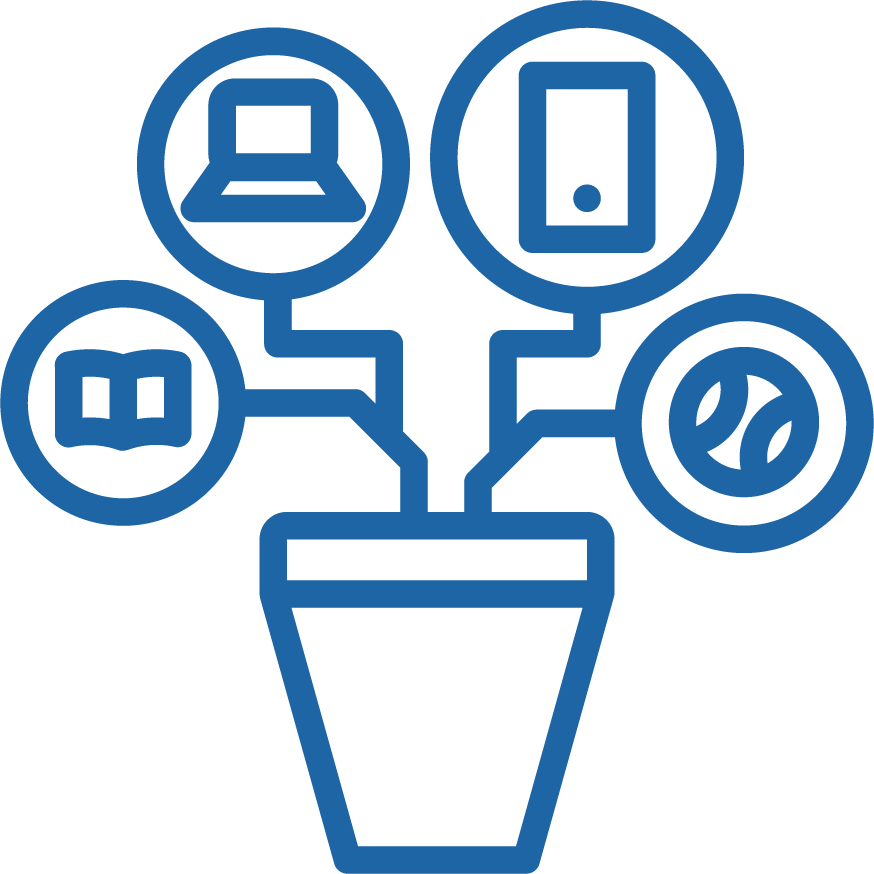| Overview | Satisfy the End User | Gather Market Requirements | Analyze the Market | Identify the Competition | Assess Product-Market Fit |
|---|
Analyze the Market
Defining your market segment(s), estimating how many customers exist within this market (market size), and understanding where your market sits in the broader education ecosystem will inform planning for additional product adaptations, identifying competitors, exploring transition pathways, and formulating strategies to gain customers.
A market analysis enables you to formulate strategies to gain adopters, plan for additional adaptations to your solution, and begin to explore transition pathways. The steps of market analysis include
- Defining your market segment(s),
- Estimating the potential number of users and what they might pay for your solution (market size), and
- understanding how demand for your solution fits in the broader education ecosystem, including how it compares to competing options available to your users.
Market segment
A market segment is a subgroup of users or educational agencies (schools, districts, etc.) that shares a common need or priority. Market segments can be defined in multiple ways, such as by geography, discipline, district type, or student populations. Researchers typically develop solutions to address needs of particular groups of students (for example, students who face socioeconomic barriers, multilingual learners) or for specific purposes (for example, middle school math, school reforms). Segmenting the market can help you think about how to cluster the types of students or schools your solution is most likely to benefit and how to prioritize outreach activities.
Answering the questions below can help you identify the market segments your product addresses. This segmentation can then help you narrow the focus of your market research, further inform your market requirements, and help you estimate market size (which matters for your transition pathways).
| Is the innovation targeting a specific student population? | Is the innovation targeting urban or rural districts? | Are there certain requirements that are typical of a state? Are there certain requirements typical for a specific student population? |
| For example, an R&D team has developed an interactive science curriculum for students with disabilities in K–5. However, an analysis of how school districts adopt similar products for this student population (market segment) finds that districts tend to adopt curriculum programs that encompass all students with features that support access and learning for students with disabilities. Thus, to serve this market segment, the team may need to include their curriculum within a broader curriculum package, or partner with others to meet the market requirements. | For example, if the innovation requires prolonged internet access (cannot be used offline), some rural districts with limited internet bandwidth may face challenges. Therefore, the R&D team may not want to target this market segment at the initial launch or may consider adaptations that support offline use. | For example, to support access to grade-level learning of multilingual learners, states may desire innovations focused on science or math that use students’ home language or use learning strategies that provide learning in formats less reliant on language. Assessing the size of such a market can inform whether development of language-specific versions will be of sufficient interest. |
To investigate these questions more deeply, consider reviewing relevant state policy and existing products (see “Spotlight Resources” below for example databases and webpages). In addition, your users, customers, and other influencers you have engaged in designing and testing your product can help you answer these questions or point to more resources and products for you to explore.
Market size
Entrepreneurs tend to start with an analysis of the market and look for large markets with unmet needs, whereas education researchers and developers often focus on segments that are smaller and design products to meet unique needs and challenges, such as students with specific disabilities. A smaller market size should not necessarily be a deterent for scaling a mission-driven product, but a consideration in evaluating the opportunities to sustainably scale and reach your market segment.
To estimate market size, you might first consider the whole universe your product might serve. For example, if you were developing a kindergarten literacy curriculum, the universe would be every single school district in the country that serves kindergarteners. Then, you would narrow from there based on your market segment—for example, states with kindergarten standards aligned with your product.
The broader education ecosystem
Breaking into a market is challenging, especially for an unknown provider. Some entrepreneurs look for openings created by changes in policy, leadership, or demographics that bring new requirements, demand, or funding streams (see the example database in “Spotlight Resources” below). For example, COVID-19 pandemic-related school closures increased the demand for digital solutions, and legislation or policy changes focused on the science of reading can create opportunities for evidence-based literacy solutions. Consider also broadly tracking trends and priorities by reviewing needs assessments, such as those produced by Regional Advisory Committees.
It is important to track changes that are relevant to your educational product and align the development and marketing with the ecosystem changes. Consider these questions:
- Has there been recent legislation or upcoming legislation that may help propel or hinder wider adoption of your product?
- Will changes in leadership shift your priorities?
- With the proliferation of digital tools, are there opportunities to integrate your product into existing or emerging systems?
Federal funding also feeds into the market for your product. Consider what federal funding streams could support use of your product. This information will help you assess how shifts in federal funding (for example, the expiration of COVID-19 relief funds) may impact the market for your product, and it can support marketing efforts (see Age of Learning resources for examples).
In addition, consider how you can shape the education ecosystem to expand your market. Working with political influencers to help inform policies that support adoption of innovations at the state and federal level is a proven scaling strategy in education.

Stories of Scaling Highlight
Lessons learned from Cognitive ToyBox, a play-based early childhood assessment tool that provides both observational and direct assessment formative feedback for educators in 22 states, highlight the importance of understanding market segments and the ecosystem forces that impact those markets.
The early childhood market is highly fragmented among public and private providers at district-based programs, Head Start programs, licensed childcare homes or centers, and other types of facilities. Initially, Cognitive ToyBox primarily targeted publicly funded early childhood programs, which tend to be larger school districts or community-based organizations.
More recently, Cognitive ToyBox began supporting smaller providers, helping them satisfy licensing requirements to qualify for certain subsidies. To meet these requirements, the company formed relationships at the state level to understand the landscape and identify key decision-makers for ECE. These decision-makers could be housed in the education, health and human services, or workforce departments, or across multiple agencies.
For Kwan, state policies are the biggest barriers to entry in the market. Every state has requirements or guidelines for ECE, and each state’s policies are different. This variation presents a range of challenges that often favor the status quo and large, established providers.
Read more of the Cognitive Toybox story of scaling.
![]()
Notice and Reflect
During the activities to test a prototype, take time to pause to notice and reflect. Consider the following question:
- In segmenting your market, who are you not serving? How might this limit your ability to equitably impact educational outcomes?

Spotlight Resource
General state education policy databases such as State Education Policy Tracking and Pre-K-12 Education Legislation Database, and topic-specific databases such as State Tutoring Efforts and Legislation Database and Education Week’s reading legislation tracker, are helpful tools for informing your market analysis. You might also consider products currently available, used, and endorsed in your market segment by reviewing resources such as EdReports, which reviews available instructional materials, and published state-level lists of approved instructional materials (see an example from Virginia).

LEARN More
Stories of Scaling: Cognitive ToyBox. This story of scaling profiles the development and scaling journey of the early childhood assessment tool, Cognitive ToyBox.
